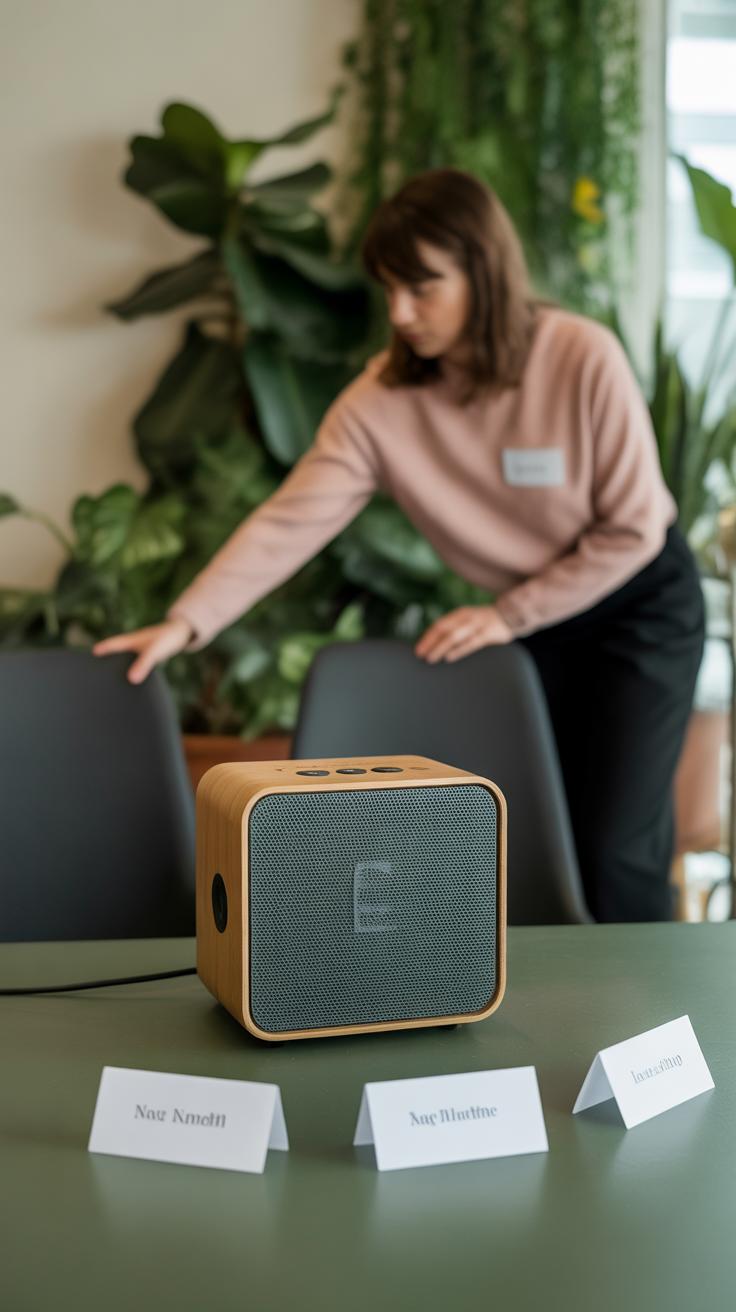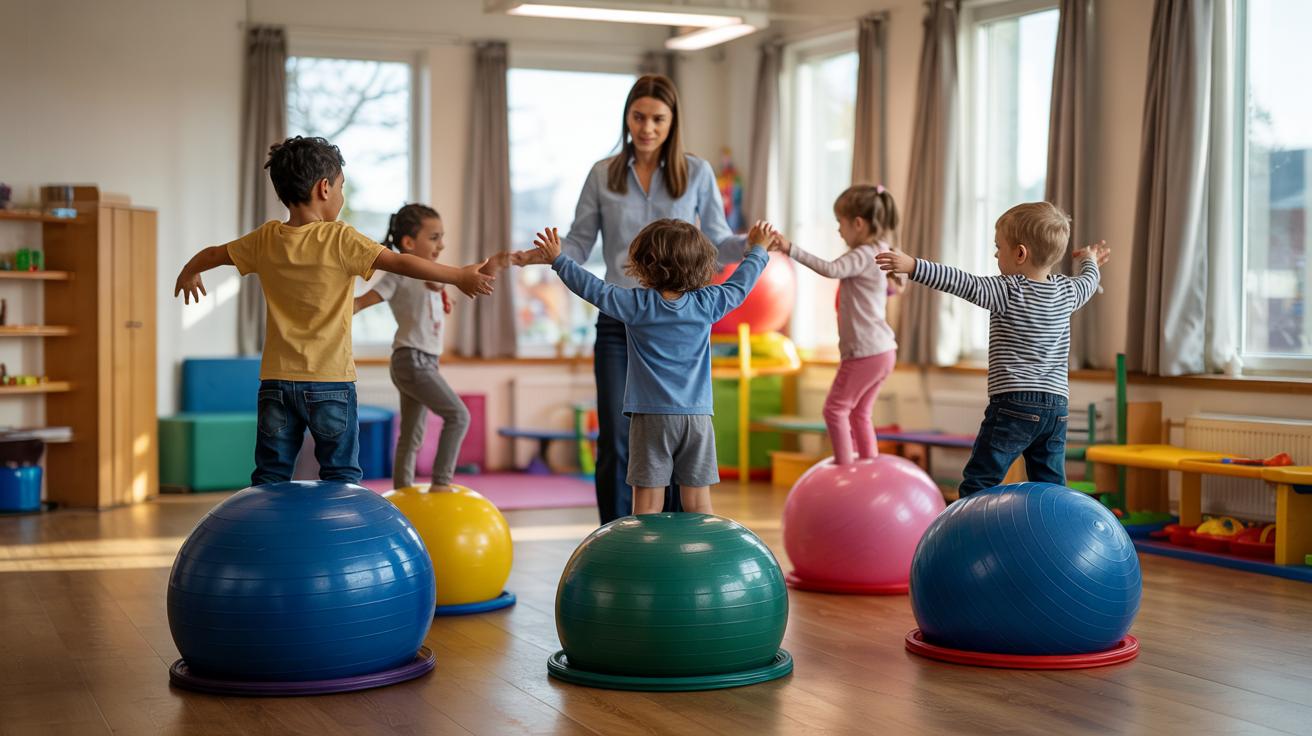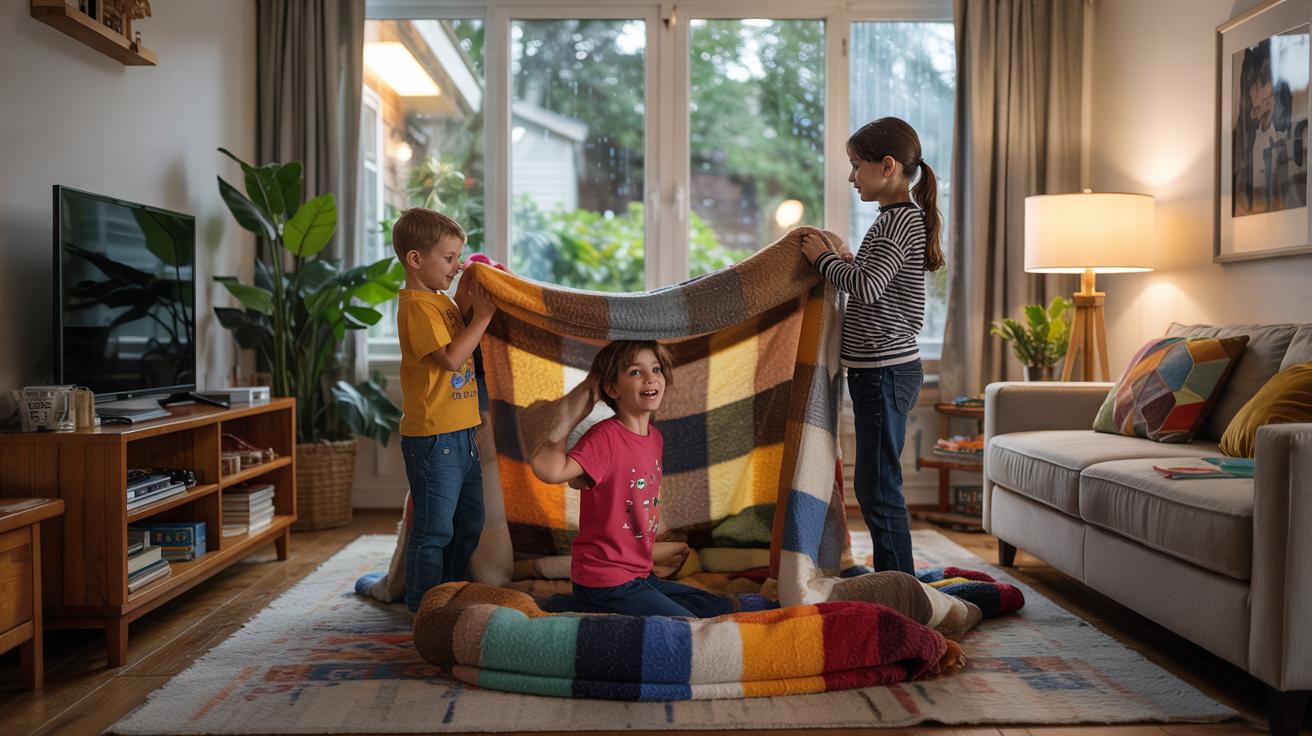Introduction
Starting a conversation in a group can feel challenging. You might wonder how to get everyone talking and feeling at ease. Ice breakers are tools to help overcome this initial hurdle. They make people comfortable and ready to communicate. Whether in school, work, or social settings, good ice breakers loosen up the mood. They open doors for meaningful conversations and connections.
Using the right ice breaker can change a group’s energy. It shifts people from silence or nervousness to participation and openness. Choosing effective and simple ice breakers helps you create a welcoming space. These techniques spark interest and encourage sharing ideas. This article explains how to use ice breakers well. It covers types, tips, and examples to help you lead better group talks.
Understanding The Purpose Of Ice Breakers
Ice breakers exist to make group conversations easier to start. When people first come together, they often feel tense or unsure about what to say. Ice breakers lower this tension by creating a safe way to begin talking.
These activities invite everyone to join in, helping people feel included early on. When you participate, you stop focusing on anxiety and start focusing on connecting. The result is a group that feels less stiff and more open.
Ice breakers also shape a relaxed space where it’s okay to share ideas or opinions. This kind of environment leads to better communication. It encourages you and others to express yourselves without fear of judgment. Have you noticed how simply sharing a fun fact can change a whole group’s mood?
Why People Need Ice Breakers
Before starting a group conversation, many people feel nervous or awkward. They worry about saying the wrong thing or being ignored. These feelings can stop you from joining in fully or enjoying the discussion.
Ice breakers help lower these worries by giving you a simple task to focus on. Instead of jumping into serious talk, you take part in a brief, light activity. This shift makes it easier to relax and notice that others share the same feelings.
When you realize others feel the same nervousness, it feels less isolating. That shared experience opens the door to real conversation. Have you ever felt lighter after a small group game? That feeling comes from letting go of tension early on.
Benefits Of Using Ice Breakers
Using ice breakers produces several positive results in group settings. First, they improve communication by creating an easy way to start talking. This means conversations don’t get stuck on silence or awkward pauses.
Ice breakers also help people bond faster. When you learn something small about others, it builds trust and a sense of connection. This shared understanding makes future conversations smoother.
The overall atmosphere becomes less tense and more welcoming. As a result, you and everyone else feel freer to speak up and share ideas. Imagine walking into a meeting where everyone already feels comfortable. How would that change the way you participate?
Types Of Ice Breakers That Work Best
Ice breakers come in different forms, each fitting various group needs and purposes. You can choose question-based ice breakers to get people thinking and sharing their thoughts quickly. These work well when you want to learn about others’ interests or create easy, relaxed conversations. Activity-based ice breakers involve short games or tasks that push people to interact and move around. These help loosen up a group and bring energy into the room, making them great for less familiar groups. Creative ice breakers invite participants to use imagination through drawing, storytelling, or problem-solving tasks. These fit groups needing collaboration or a boost in creativity. Think about your goals and the group’s mood before picking the type. Which approach do you think will engage your group best?
Question Based Ice Breakers
Simple questions can spark thoughtful and fun conversations. Asking about hobbies, favorite movies, or recent travels helps people open up without pressure. You might try “What’s one thing you love doing on weekends?” or “If you could have any superpower, what would it be?” These questions invite personal sharing and often lead to follow-up stories. Fun fact questions like “What’s an unusual skill you have?” encourage smiles and reveal unexpected sides. Such ice breakers work well at the start of meetings or casual groups where comfort matters. What question would you ask to make someone smile and start talking?
Activity Based Ice Breakers
Engaging in short activities gets people moving and connecting. Games like “Two Truths and a Lie” ask each person to share two real things and one false one about themselves. The group guesses which is false, which inspires laughs and curiosity. Another option is a quick “Human Bingo,” where participants find others who match statements on a bingo card. These activities lower walls by mixing movement with conversation. They work best when the group is new or feels stiff. Such fun and interaction create energy and make everyone feel part of a team. What kind of game could bring your group closer right away?
Adapting Ice Breakers For Different Group Sizes
Ice breakers must fit the size of your group to work well. When you are in a small group, you can choose more personal and detailed activities. People feel safer sharing stories or opinions because they know each other better or the setting feels more intimate. In larger groups, ice breakers that involve everyone all at once can become chaotic. You risk losing engagement as some may stay quiet or distracted. Breaking a big group into smaller teams gives everyone a chance to speak without feeling overwhelmed. Do you notice people tuning out in bigger groups? That’s a sign to change your approach. Tailoring your ice breaker to the size helps keep everyone included and focused. Your goal is to create space for connection no matter how many people are present.
Techniques For Small Groups
Small groups are the perfect place for ice breakers based on personal stories. Ask each person to share a memory or a challenge they’ve faced related to the topic. A simple question like “What’s a hobby you enjoy?” can spark natural conversation. You can also try small shared tasks, such as building something together or solving a quick puzzle. These activities encourage cooperation and help people learn about each other beyond surface level. When everyone gets a turn to talk, the group feels more connected and comfortable. Think about times when you’ve had meaningful conversations in small groups—what helped ease the talk? Use those moments to shape your ice breaker choices.
Techniques For Large Groups
When you work with bigger groups, start by pairing people for quick exchanges. For example, have them introduce themselves and share one fun fact with their partner. After a few minutes, invite pairs to join similar groups of four or six for a short discussion. This breaks the larger group into manageable conversations. You can also use simple games or quizzes where people respond on their phones or with a show of hands. These keep energy high and allow everyone to participate at their comfort level. Have you tried splitting a big room into small teams for an ice breaker? It’s a proven way to avoid silence and encourage more voices to join in.
Considering The Setting And Context
Choosing the right ice breaker depends on where you are and what kind of meeting you have. You wouldn’t use the same approach in a formal office meeting as you would at a casual party. Think about the setting before you start. Is the atmosphere professional and serious, or relaxed and informal? Matching your ice breaker to the environment helps make everyone feel comfortable and ready to join the conversation.
Reflect on your goals. Are you trying to build trust among coworkers, or are you simply helping friends get to know each other better? For example, a work meeting might need an ice breaker that shows respect for time and topic. Meanwhile, a social gathering could benefit from something lighter and more playful.
Ask yourself: How can I make this moment fun without crossing any boundaries? Adjusting your ice breaker shows that you understand the group’s needs and create a better space for discussion.
Professional Settings
At work or formal events, choose ice breakers that respect the tone and time limits. Avoid personal or overly casual questions. Instead, focus on topics related to the meeting or common professional interests. You could ask about a recent project or a positive challenge the group faced.
Try questions like, “What skill have you recently improved at work?” or “What’s one goal you have for this quarter?” These help keep the conversation relevant and respectful. They also allow people to share ideas without feeling exposed.
Respect matters. Make sure the ice breaker fits the group’s culture and does not make anyone uncomfortable. Keep it brief and clear. The goal is to open communication without wasting time or causing awkwardness.
Social Settings
When you’re at a party, club, or casual meetup, your ice breaker can be more fun and relaxed. Consider asking silly or entertaining questions that encourage laughter and quick responses. For example, “If you could have any superpower, what would it be?” or “What’s your go-to dance move?”
Games like “Two Truths and a Lie” or quick storytelling prompts work well in these spaces. They help break down barriers and get people talking easily. Since the mood is light, you don’t need to worry about staying formal or serious.
Think about what will make people smile and feel at ease. When you create a relaxed environment, conversations flow naturally. Would a quick, low-pressure game spark interest here? Trying this can lead to stronger connections and more fun.
Crafting Your Own Ice Breaker Questions
Creating ice breaker questions that fit your group helps start conversations naturally. Think about what your group shares—work interests, hobbies, or goals. Choose questions that invite people to talk without pressure. Open-ended questions work best because they let people express ideas or stories instead of giving short answers.
Focus on questions that spark curiosity or humor. For example, instead of asking “Do you like movies?” try “What’s a movie that made you laugh or think deeply?” Notice how this encourages more than a yes or no response. Tailor your questions to fit the mood and size of your group. Smaller groups may handle more personal topics, while larger ones might need lighter questions.
Try testing your questions on a friend or colleague first. This helps you see if the question feels inviting and easy to answer. What questions would make you feel comfortable sharing? Use those as a guide when crafting your own.
What To Avoid In Questions
Avoid questions that might make people uncomfortable. Questions about income, politics, religion, or personal relationships can shut down conversations quickly. These topics often lead to tension or silence, which hinders connection.
Steer clear of yes/no questions or ones with only one right answer. They don’t invite explanation or personal insight. Also, avoid questions that put people on the spot or force them to share too much too soon.
Respect boundaries by keeping questions friendly and neutral. If a question could embarrass or pressure someone, it’s best left out. Your goal is to build trust, not create awkward moments.
Examples Of Engaging Questions
Good questions make sharing easy and thoughtful. Try asking, “What’s a hobby you’ve always wanted to try and why?” or “What’s the best advice you ever received?” These invite stories and personal reflection.
Other examples include, “If you could visit any place right now, where would it be?” and “What’s one thing you’re proud of that others might not know?” These questions encourage sharing without feeling unsafe.
Questions like these help your group open up gradually. People enjoy talking about their experiences when the questions show interest and respect. Which of these questions could fit your next group conversation? Experiment by mixing them with your own ideas.
Using Activities To Build Energy And Engagement
Short, interactive activities help participants feel more awake and involved. They break the ice beyond just talking and set a lively tone. When people move or work together, their focus sharpens and their interest grows.
Common ice breaker games such as “Two Truths and a Lie” or “Human Bingo” create a sense of fun and encourage sharing. These games let participants learn about each other quickly, often leading to smiles and relaxed faces. This ease spreads through the group, improving how members interact.
Energy in a group builds when activities engage both the mind and body. When players have a chance to collaborate, trust and openness rise. Think about your group’s mood: could a quick game change the atmosphere? Trying interactive steps might make your discussions flow better from the start.
Simple Games That Work
You don’t need complex setups to boost interaction. Games like “Would You Rather” or “Speed Networking” require no materials and just a few minutes.
To run “Would You Rather,” pose two choices and ask participants to pick one. This sparks quick opinions and light debates. “Speed Networking” pairs people for quick chats to share a fact or idea before moving on. This gets everyone talking fast.
These games invite quiet members to take part without pressure. They open paths for laughter and help break down social distance. You can adapt these games by adding questions or changing the pace, based on your group’s energy.
Creative Group Challenges
More involved activities push groups to think together and solve problems. Challenges like “Group Storytelling” or “Building the Tallest Tower” use imagination and teamwork.
In “Group Storytelling,” each person adds a sentence to a story. This builds creativity and teaches listening. For “Building the Tallest Tower,” participants use items like paper or blocks. They plan and cooperate, boosting collaboration skills.
These tasks create stronger bonds because everyone contributes to a shared goal. They push people to communicate clearly and trust each other. What group challenge could spark your team’s creativity today?
Timing And Execution Of Ice Breakers
Starting Strong
You want to begin your meeting on a positive note. Starting with an ice breaker helps create a relaxed atmosphere. It lowers tension and encourages participation from the first moment. Choose a simple activity that fits the group size and purpose. For example, a quick “share your weekend” round works well for small teams. When the group feels comfortable, the conversation flows more easily. Try to start the ice breaker right after people settle in, before jumping into the main agenda. This timing makes the transition smoother. Consider the mood of the group—if the team is already familiar with each other, a light-hearted question might be enough. When you time your ice breaker well, you engage people quickly and set the stage for focused discussion.
Knowing When To Stop
Ice breakers should not run longer than five to ten minutes. Keep them short to maintain energy without losing focus. Long ice breakers can distract from the main goal and drain participants’ attention. If you notice people getting restless or distracted, it’s time to move on. Watch for signs like checking phones or looking away. After the ice breaker, make a clear connection to what comes next. You might say, “Now that we’ve all warmed up, let’s dive into today’s topic.” This helps reset everyone’s mindset. By stopping early and shifting smoothly, you keep the meeting on track. Have you ever been in a meeting where ice breakers felt endless? Use that experience to guide your timing.
Handling Challenges During Ice Breakers
Shy participants often hesitate to speak up during ice breakers. You can make them feel safer by asking simple, low-pressure questions that don’t call for personal details. Try giving them time to think before answering or let them pass initially without pressure. If silence appears, don’t rush to fill it. Allow moments for participants to gather their thoughts. Pausing can encourage others to jump in.
Uncooperative members might resist engaging because they feel uncomfortable or see little value in the activity. Observing their reactions can guide you. If an ice breaker meets resistance, try switching to a different activity that better suits the group’s mood or interests. Sometimes breaking the ice in pairs instead of the whole group can ease tension.
Awkward silence signals that something isn’t working. It’s okay to acknowledge this and invite feedback. Asking “What would make this easier for you?” can open a conversation that leads to adjustments. You control the pace; adapting the process keeps the experience positive and inclusive.
Encouraging Participation
Quiet people often need gentle encouragement to share without feeling spotlighted. You can ask open-ended questions that invite short answers or use activities requiring brief responses. A good example is “What’s one word to describe your mood today?” Instead of demanding long stories, these small steps build confidence.
Break larger groups into smaller pairs or trios. People usually open up more in small groups where they feel less judged. Another option is to allow written responses first, then let volunteers share aloud.
Remind yourself: how could you invite someone to talk without making them anxious? Giving options to participate in different ways helps everyone join comfortably.
Dealing With Resistance
When some group members resist ice breakers, it often reflects discomfort with the format or topic. Try changing your approach by offering choices. Let them pick between two ice breakers or suggest their own way to introduce themselves. This gives control back to the group.
If resistance remains high, consider lowering the energy level. Use a calm, less intrusive activity, like a simple “share your favorite snack” question. Sometimes, resistance comes from a mismatch between the ice breaker and the group’s culture or mood.
Pay attention to body language and verbal cues. Invite private feedback if needed. Are participants more willing to join after slight changes? Adapting to group needs keeps the experience inclusive and productive.
Measuring The Success Of Your Ice Breakers
Knowing if your ice breaker worked helps you build better group conversations. Watch how the group behaves after the activity. Are people more relaxed? Do they talk more? These signs show your ice breaker created a comfortable space.
Look for clear changes in interaction. Does the energy feel higher? Are quieter members starting to share? Positive shifts here mean your method encouraged involvement. Ask yourself if the group looks connected or still distant. This tells you if you need a different approach next time.
Feedback from participants also gives valuable clues. If they enjoy the ice breaker, they’re more likely to stay engaged. You can learn what worked and what didn’t directly from the group. Use this information to choose or design ice breakers that fit your team’s style and mood better.
Observing Group Responses
Body language shows a lot about how well your ice breaker worked. Smiles, laughter, and relaxed postures usually mean people feel comfortable. Notice if more people raise their hands or join conversations after the activity. This signals growing participation.
Watch the energy in the room. Does it rise, or do people seem distracted? A good ice breaker creates quick, positive energy shifts that carry into the main discussion. Silence or fidgeting may show the group is not yet ready to open up. Checking these signs helps you react in the moment.
Gathering Feedback
Ask simple questions right after the ice breaker. You could say, “What did you think about that activity?” or “Did it help you feel more comfortable?” Short, direct questions encourage honest answers without much effort.
Consider quick written polls or a thumbs-up/thumbs-down show of hands to gauge feelings. When people share their thoughts, you discover which parts worked best. Use this feedback to tweak ice breakers for future conversations. Keep asking yourself: Did this help everyone join in? If not, what could improve?
Conclusions
Knowing how to use ice breakers helps you create a better group environment. It gives you a way to reduce tension and build trust fast. When people feel comfortable, they share more freely and listen better. Good ice breakers suit the group’s size, setting, and purpose. You can choose ones that involve fun, creativity, or simple questions. Each serves to connect people and start the conversation flowing.
Try different ice breakers in your next group meeting. Notice what works best for your group’s style. Remember, your goal is to encourage everyone to speak and feel included. With practice, you will find easy ways to break the ice. That leads to richer discussions and stronger team spirit. Will you try an ice breaker today to improve your group talks?

























